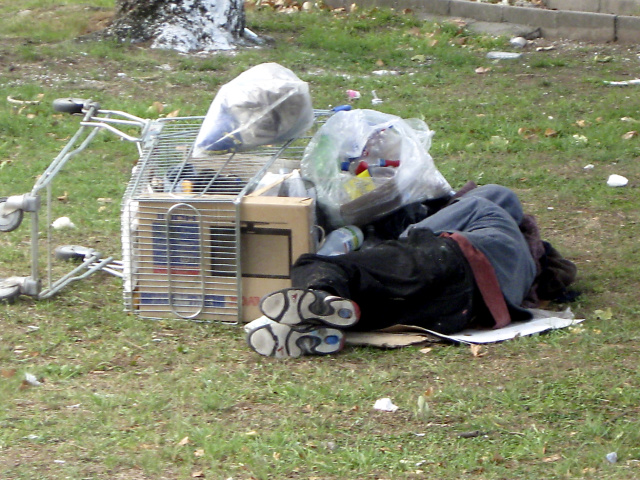Last year’s landmark study, The Effects of Exposure to Better Neighborhoods on Children, by Raj Chetty, Nathaniel Hendren and Lawrence Katz, documented the vast disparities in economic opportunity for poor children across the nation. It revealed that poor children in Oklahoma County were four points lower than their counterparts in Baltimore County regarding their long-term economic outcomes. The biggest difference between Baltimore and Oklahoma County, which ranked in the bottom 17 percent of the nation in that category, is that poor girls in Oklahoma County have much fewer opportunities to break out of poverty.
Chetty recommended, in part, that poor people could move to better areas. Since poor kids who grow up in Oklahoma County can expect to earn $1,470 less than the U.S. average for poor children, Chetty suggested that poor families should “move to opportunity.” One such place would be Canadian County, where poor kids have better economic prospects than children in 83 percent of the nation’s counties, and they can expect to earn $3,130 more than average.
(Maybe Chetty is right, and poor people should pattern their behavior after that of the economic elites. In 1983 alone, Reagan’s tax breaks helped destroy 10 percent of our state’s jobs, and by the 1990s, nearly all our county’s good-paying blue-collar jobs were gone. A disproportionate number went to Canadian County.)
New numbers also focus on Oklahoma
A new study led by Chetty and published in the Journal of the American Medical Association (JAMA) is again dominating the nation’s headlines. It documents the health disparities of poor people across America. The New York Times reports that in some parts of America, “adults with the lowest incomes die on average as young as people in much poorer nations like Rwanda, and their life spans are getting shorter.” Chetty told the Times, “You don’t want to just think about why things are going badly for the poor in America. You want to think specifically about why they’re going poorly in Tulsa and Detroit.”
The JAMA study finds that, from 2001 to 2014, “Among the population in the bottom income quartile, the shortest life expectancy was found in Oklahoma and in cities in the rust belt, such as Gary, Indiana, and Toledo, Ohio.” It discovered that poor men in Tulsa were tied for the fourth-lowest life expectancies, with Oklahoma City males living just one-tenth of a year longer. Poor Oklahoma City women had the second-lowest life expectancies, with Tulsa women living only one-tenth of a year longer.
The Times notes that, “Places where poor citizens had long life spans also tended to have a high concentration of college graduates and high local government spending.” Also, some find an optimistic message in the study because it shows that “the right mix of steps to improve habits and public health could help people live longer, regardless of how much money they make.” Sure enough, the JAMA study recommends that health professionals “make targeted efforts to improve health among low-income populations in cities, such as Las Vegas, Nevada; Tulsa, Oklahoma; and Oklahoma City, Oklahoma.”
This research, however, comes on the heels of the much-publicized study of the rising death rates of middle-aged whites, especially those with a high school education or less. Moreover, the Washington Post noted how one explanation contends the rising mortality rate among whites is the “dashed expectations” hypothesis. The theory argues that whites, including uneducated whites, used to have greater access to good-paying blue-collar jobs. But, one proponent of the theory says, “We are undergoing a change that’s comparable to the Industrial Revolution … Those of us who are lucky enough to have jobs are sort of clinging to them for dear life.”
The Post reports:
In modern times, rising death rates are extremely rare and typically involve countries in upheaval, such as Russia immediately after the collapse of the Soviet Union. In affluent countries, people generally enjoy increasingly long lives, thanks to better cancer treatments; drugs that lower cholesterol and the risk of heart attacks; fewer fatal car accidents; and less violent crime. … This reversal may be fueling anger among white voters: The Post last month found a correlation between places with high white death rates and support for GOP presidential candidate Donald Trump.
If a President Trump can’t solve our health problems by making America great again, what can we do?
The optimists cite Birmingham, Ala., where the life span for adults in the bottom quarter of income rose 3.8 years for men and 2.2 years for women from 2001 to 2014. They expanded availability of preventive health care like vaccinations and mammograms, opened clinics in poorer neighborhoods, directed a portion of local taxes to hospital care for those who cannot pay, and banned smoking in restaurants and workplaces. Also, “philanthropic foundations backed by old industrial money have funded campaigns to make people healthier in the Birmingham area.”
So, a Harvard economist asks, “Why is it that Birmingham has done well but Tulsa has done poorly?” Why keep saying cryptically, “Thank God for Mississippi“? Why can’t we learn from Alabama?
Economic roots
The recent national conversation, featuring Oklahoma as a cautionary tale, appropriately includes questions about altering individuals’ behavior, as well as health and health-related systems, and addressing the economic roots of the decline in health. I would also note that Indiana is another state with dramatic increases in mortality and morbidity. It responded to deindustrialization by passing an anti-union Right to Work law. In doing so, it crippled a key institution working for economic justice, the social safety net, and a higher quality of life.
Oklahoma, of course, passed our Right To Work law just before we went into this terrible decline.
Finally, Oklahoma has a history of booms and busts. I fear that the legacy of our heritage is fatalism; a sense that what goes up will soon come down, so what’s the point?
On the other hand, Oklahomans have survived worse.






















